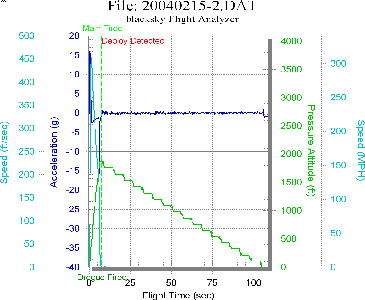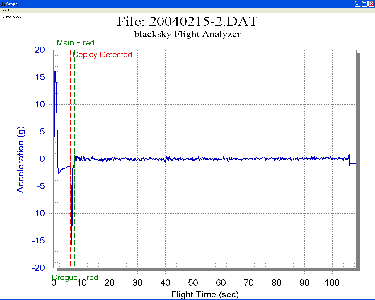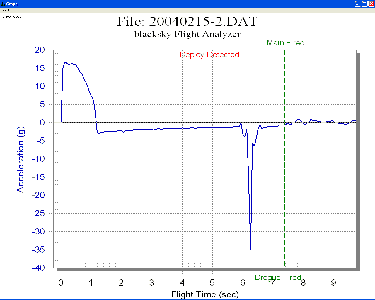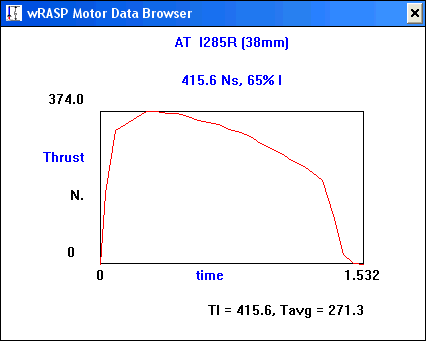 LUNAR’clips
2004
Volume 11, Number 2
LUNAR’clips
2004
Volume 11, Number 2
 LUNAR’clips
2004
Volume 11, Number 2
LUNAR’clips
2004
Volume 11, Number 2
Livermore Unit of the National Association of Rocketry March/April 2004
Copyright © 2004 by LUNAR, All rights reserved.
By Tony Cooper, LUNAR # xxx
Technically, acceleration is the change in velocity. Just to take you back to those scarey high school days, velocity is kind of like speed, but it specifies a direction too. When you are driving down the street, you can look down at your speedometer and see how fast you are going. But to know your velocity, you have to have a compass too. While your speed might be 55 mph, your velocity might be 55mph due north. Let's get back to acceleration.
This means that if you don't change your velocity, you don't have acceleration. Reflecting on Sir Isaac Newton's first law of physics, "An object at rest will stay at rest and an object in motion will stay in motion at the same velocity unless acted upon by a force."
As rocketeers we have three forces to deal with. The force we all like to brag about is thrust. The force that brings back our rockets is gravity. And the third force that we frequently forget is there at all is drag. We are almost ready to start our discussion of what accelerations a rocket feels.
To complete our knowledge foundation, we need to know how an accelerometer works. Most accelerometers work by suspending a mass via strain gauges. Don't get scared off. A strain gauge is a simple device to measure how hard something is being pulled. Last detail, most accelerometers used in rocketry only measure acceleration in one axis. That means that it can only measure the nose to tail (up and down) motion of the rocket, not the lateral motion (left. right, forward or backward). This also means that if the rocket isn't pointed up, it doesn't measure up acceleration. It only measures acceleration along the direction the nose and tail are pointed.
I lied, there is one more point we need to talk about regarding acceleration. That is how we measure acceleration. There are two standard ways we measure acceleration. We measure it in Gs and we measure it in change in speed per second. When we say we are accelerating at 1G we are saying that we are accelerating at the same rate that gravity would accelerate us if we were in free fall. 1G can also be expressed as 32 feet per second, per second. No, that wasn't a typo. "32 feet per second" is speed and the second "per second" is time. This is often expressed as 32 feet per second squared. As an example, when we drop the proverbial coin from the top of the empire state building, it will accelerate to 32 feet per second during it's first second of free fall. During it's second second of free fall, it will accelerate to 64 feet per second. At the end of three seconds of free fall, the coin is falling at 96 feet per second.
Is there a limit to how fast it will fall? Thank you for asking. Yes and no. If we didn't have air to produce drag, it would keep accelerating until the coin hit mother Earth. But because there is air, the coin will fall faster and faster until it reaches terminal velocity. No the coin doesn't die at that point, it simply stops accelerating. That is because the force due to wind resistance, or drag, is equal to the force of gravity. Now we are ready to talk rockets and acceleration.
I use a Black Sky AltAcc2B in my PiZata rocket. It's capable of measuring two ranges of acceleration. +/- 25G's and +/- 50Gs. It's set to +/- 25 Gs. Figure 1 is a copy of my last PiZata's download, the full 110 seconds of flight. Figure 2 is just the acceleration chart while figure 3 is just the first 10 seconds of the acceleration chart. This is a 4" rocket that flew on a I285R-7. It's especially interesting. Why? Because I picked way too short a motor delay as backup to my electronics. Figure 4 is a different, but picture perfect 85 second flight on an H220. One important note here is that an AltAcc is calibrated to gravity. That means if you turn the AltAcc upside down, it thinks it's accelerating at 1G. So if you want to factor in acceleration due to gravity you need to raise the graph by 1G.

Figure 1. PiZata download - 110 sec.

Figure 2. Acceleration - 110 sec.

Figure 3. Acceleration - First 10 sec.
You'll notice the graph starts at 0G. Motor lights and it jumps to 17Gs. (Because of rounding to plot a graph, you have to use the enlarged graph to get more accuracy.) Curious if this is correct? (Fig. 5) The I285's initial thrust is about 350N and rises to 375N in the first .5 seconds. My rocket weighs 65 oz empty. If you really want to dig into the equations, check out this site. http://my.execpc.com/~culp/rockets/rckt_eqn.html other wise take a look at WinRASP (Fig. 6) (Windows Rocket Altitude Simulation Program) and you'll see that it pretty closely matches what I measured.

Figure 5. Thrust curve for an I285.
Motor burns out at 1.2sec as acceleration passes through 0. Air resistance at 330mph and 400' causes the acceleration to go to -3Gs. Up to 6.2 sec after liftoff, acceleration gradually drops to -1G. Drag is becoming negligible and only gravity is accelerating the rocket downward. Speed has dropped to 120mph and the altitude has gone up to 1750'. That's when it happened.
The motor's 7 second delay fired and ejected a 36" parachute into a 120mph air stream. The deceleration was 35Gs (Don't ask, I know the accelerometer is set to +/-25Gs). In the space of about .1 sec, speed dropped from 120mph to 30mph. The bulkhead in the booster failed and the booster fell from the sky. The payload with electronics took another .2 seconds to stop rising and start falling under chute. Acceleration is 0Gs because the rocket is no longer changing speed. You can see that the AltAcc fired both main and drogue chutes about 1.5 sec. after deployment was detected. The AltAcc is programmed that if it detects apogee in less than 6 seconds, it will throw out all the laundry. I guess that 6.3 seconds is close enough. As the payload drifts to earth for the next 100 sec., acceleration is 0Gs. It's not changing speed. Gravity and drag are equally balanced.
If you compare this to figure 4's picture perfect flight, you'll notice that on this flight acceleration oscillates around -1G. The electronics bay either hangs nose down until the main parachute deploys or it hangs between two parachutes. Because the electronics bay is largely horizontal the reading is -1G. That's because the accelerometer is calibrated to ignore gravity. It oscillates between one chute then the other tipping it up making the oscillations in the graph. This time though, the drogue partially stripped so it hung in the correct orientation. Then it hits the ground where acceleration goes to -1G. Why? Again, the single axis accelerometer fell over on it's side and it can't see gravity any more.
A normal flight with gravity should start at 0G, jump up to motor acceleration until burn out. Then depending on the rocket's coefficient of drag and speed, it will fall to some value greater (This always did confuse me but -2 is considered greater than -1.) than -1G. This is because the rocket is slowing due to drag and gravity.
If the rocket tail stands, it will drop to -1Gs as drag disappears. As the rocket starts tail sliding, it's still accelerating at -1G. This will continue until it reaches terminal velocity. (Speed at which drag matches gravity.) At this point it acceleration drops to 0Gs because it's no longer accelerating. If the parachute pops, that will happen at a much lower speed than if chute fails to deploy.
If the rocket tips over (weathercocks) rather than tail stands, the accelerometer only sees the negative Gs of drag. The rocket will not stall and will start accelerating by 1G as it noses over and starts heading back down. Once hitting terminal velocity with or without a parachute, it will be at 0Gs of acceleration. To the accelerometer, it went from high positive Gs, to some negative Gs and back to near 0Gs
I hope this lengthy explanation helps in understanding acceleration. I find it interesting that all that stuff I was taught in high school and in the military actually seems to work. I've calculated it, watched it, heard it and now I've measured it. To quote myself, now I have bragging rights. If you wish to give any feed back you can reach me at Anthony M. Cooper, Membership@LUNAR.org.
All content is the responsibility of LUNAR.
If you have comments or suggestions regarding these web pages,
please contact the 
Copyright © 1992 - 2025 LUNAR